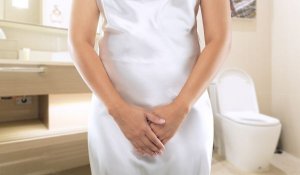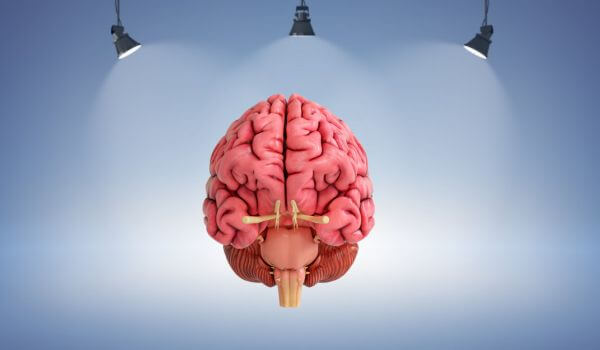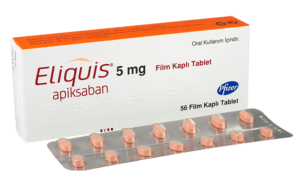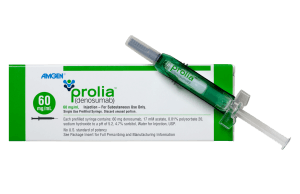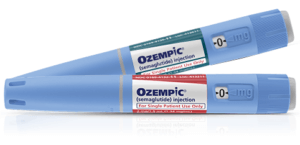
In this article, we will discuss cystitis, its causes, treatment, and why it sometimes manifests differently in men and women. We will also discuss how to prevent it, how lifestyle plays a role, and when to seek professional help.
What is cystitis?
Cystitis simply means inflammation of the bladder. It’s usually caused by an infection, usually a bacterial infection, but not always. When it is due to bacteria, it’s called bacterial cystitis, a type of urinary tract infection, or UTI.
The infection typically starts when bacteria enter the urinary tract through the tube that carries urine out of the body (the urethra) and begin to multiply in the bladder. Although the body has defenses to keep these bacteria out, sometimes they succeed in causing trouble.
In most cases, especially among sexually active women, the bacteria behind the infection is Escherichia coli, better known as E. coli. This bacterium is commonly found in the intestines, where it’s usually harmless. But if E. coli makes its way into the urinary tract, it can lead to a painful bladder infection.
Other types of bacteria can cause cystitis, but E. coli is responsible for roughly 80–90% of cases in otherwise healthy individuals.
Common symptoms of cystitis 
Symptoms may vary a bit from person to person, but the ones that pop up most often are:
- A strong, persistent urge to urinate
- A burning feeling during urination
- Passing small amounts of urine frequently
- Cloudy or strong-smelling urine
- Blood in the urine (hematuria)
- Discomfort or pressure in the lower abdomen
- Feeling generally unwell or fatigued.
In more serious cases, especially if the infection spreads to the kidneys, there may be fever, chills, and back pain. These can indicate a kidney infection, which requires prompt medical attention.
Diagnosing cystitis with urine tests
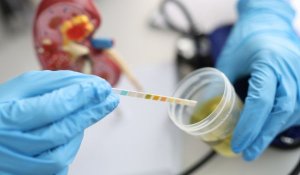
Antibiotic treatment is the first line of defense
For bacterial cystitis, the preferred initial treatment is a course of antibiotics. The type and duration depend on whether the infection is uncomplicated (usually in healthy women) or complicated (which might involve men, pregnant women, or people with underlying medical issues).
Commonly used antibiotics include:
- Macrobid (nitrofurantoin) – often a first choice for women with uncomplicated infections
- Bactrim, Septra, Diseptyl Forte or Resprim Forte (trimethoprim & sulfamethoxazole – TMP-SMX) – effective, but not ideal in populations with high resistance rates
- Monurol (fosfomycin) – a convenient one-dose option
- Cipro, Ciprodex or Ciprofloxacin (ciprofloxacin) – usually reserved for complicated or resistant infections.
These medications usually begin relieving symptoms within 24-48 hours. But even if the symptoms improve, it’s important to finish the full course of antibiotics to fully clear the infection and prevent recurrence.
Men vs. Women: Cystitis isn’t the same for everyone
Cystitis affects women far more often than men, mainly due to anatomy. The female urethra is shorter and located closer to the anus, making it easier for bacteria like E. coli to enter the bladder.
In Women: 
- Menopausal women are more susceptible to cystitis due to a decrease in estrogen production. This leads to thinning and dryness of the vaginal and urethral tissues, making them more vulnerable to mild cystitis. Additionally, reduced estrogen can affect the balance of vaginal flora, making it easier for bacteria to colonize and cause an infection.
- Most cases are uncomplicated.
- A short, 3- to 5-day antibiotic course is often effective.
- For some women, sexual activity can trigger infections, making preventive strategies helpful.
In Men:
- Cystitis is less common and often signals a more complex issue, such as prostate enlargement or urinary obstruction.
- Men are typically given a longer course of antibiotics (7 to 14 days).
- Doctors usually recommend additional evaluation to rule out other possible underlying causes.
Because of these differences, men with UTI symptoms should always seek a medical consultation rather than self-treat.
About non-bacterial cystitis
Sometimes, people have bladder pain and urinary symptoms but no sign of bacteria in the urine. This condition may be interstitial cystitis (IC), a chronic bladder condition that’s not caused by infection. It’s trickier to treat and may require a mix of lifestyle changes, medications, and physical therapy.
Lifestyle tips and natural support
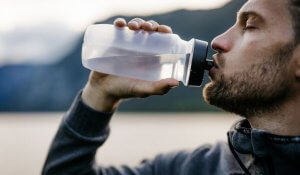
- Drink plenty of water. Staying hydrated helps flush bacteria from the urinary tract. Think of it like cleaning out the pipes. But keep the drinking to clear liquids. Sweetened drinks (whether natural or artificial) and most fruit-flavored drinks have a less beneficial effect than pure water. There’s some evidence, though not conclusive, that cranberry juice or capsules may help prevent bacteria from sticking to the bladder wall. It won’t cure an active infection but may reduce the risk of future ones.
- Empty your bladder regularly. Don’t hold it in! Delaying urination can allow bacteria to multiply.
- Practice good hygiene. For women, especially, wiping front to back, urinating after sex, and avoiding irritating feminine products can all help reduce bacterial entry into the urinary tract.
- Avoid bladder irritants. During an infection, it’s wise to skip caffeine, alcohol, spicy foods, and artificial sweeteners, all of which can irritate the bladder.
When to see a doctor
While mild cases can improve quickly with antibiotics, it’s important to consult a healthcare provider if:
- Symptoms persist or worsen after starting treatment
- There’s a fever, back pain, or nausea (signs of a kidney infection)
- Infections keep coming back
- The person affected is a man, a child, or a pregnant woman
Even though many UTIs are mild and treatable, they can lead to complications if ignored.
Final thoughts about cystitis.
Don’t let mild cystitis catch you off guard. As with many health concerns, early action is key. Knowing the signs, understanding the differences between men and women, and staying on top of hygiene and hydration can make a big difference. And while tips like drinking water and cranberry juice can be helpful, they work best as preventive measures, not cures.
If there’s one thing we hope to teach, it’s this: cystitis may be common, but that doesn’t mean it should be taken lightly. When symptoms arise, professional guidance ensures that the right treatment is given and that any underlying issues are properly addressed. And that, in the end, is how people stay one step ahead of cystitis.
This article is not a substitute for professional medical advice, diagnosis, or treatment. Always consult a healthcare provider with any questions regarding a medical condition.
Frequently Asked Questions about Cystitis
Does drinking water flush out cystitis?
Drinking plenty of water is one of the most helpful supportive measures when managing cystitis, particularly in its early stages. While water alone cannot cure a bacterial bladder infection, it plays an important role in helping the body’s natural defenses work more effectively. Hydration increases urine output, which can help flush some bacteria from the urinary tract before they multiply or spread. This flushing effect may ease symptoms like burning or urgency and reduce the concentration of bacteria in the bladder. However, it’s important to understand that for bacterial cystitis, especially once symptoms are present, antibiotics are typically required to fully clear the infection. Water supports recovery and prevention, but it’s not a substitute for medical treatment. For people prone to recurrent UTIs, consistent hydration is also a key strategy in reducing future infections. Always pair hydration with appropriate treatment as prescribed by a healthcare provider.
Is mild cystitis the same as UTI?
Cystitis is a type of urinary tract infection (UTI), but the two terms are not exactly the same. A UTI refers to any infection that occurs in the urinary system, which includes the kidneys, ureters, bladder, and urethra. Cystitis specifically refers to inflammation or infection of the bladder, which is the lower part of the urinary tract. In many cases, people use the terms interchangeably because bladder infections are the most common type of UTI, particularly in women. However, it’s important to distinguish between them because UTIs can vary in severity depending on which part of the urinary tract is affected. For example, an infection in the kidneys (called pyelonephritis) is more serious and can involve different symptoms, like fever and back pain. Cystitis is usually more localized to the bladder, with symptoms like burning during urination, urgency, and lower abdominal pressure. Both conditions require proper diagnosis and, usually, antibiotic treatment.
What are the warning signs of a bladder infection?
A bladder infection, or cystitis, often presents with a distinct set of symptoms that signal something is wrong in the urinary tract. Some of the most common early warning signs include a persistent and urgent need to urinate, a burning or stinging sensation during urination, and frequent trips to the bathroom that produce only small amounts of urine. The urine itself may appear cloudy, have a strong or foul odor, or even contain visible blood. Many people also experience pressure, cramping, or discomfort in the lower abdomen or pelvic region. In mild cases, these symptoms may come on gradually, but they can also appear suddenly and become increasingly uncomfortable over a short period of time. If the infection begins to spread, warning signs may escalate to include fever, chills, nausea, and pain in the back or sides, which could suggest a kidney infection. Recognizing these signs early is key to seeking timely treatment and avoiding complications.
How long does mild cystitis last?
Mild cases of cystitis, especially those that are caught early and treated promptly, typically resolve within 3 to 7 days. With appropriate antibiotic treatment, many people begin to feel relief from symptoms such as burning, urgency, and bladder pressure within the first 24 to 48 hours. However, it’s essential to continue the full course of antibiotics as prescribed, even if the symptoms improve quickly. In cases where no antibiotics are used, such as very mild or early infections that are managed with increased fluid intake and rest, symptoms may still clear up on their own, but this can take several days and carries the risk of worsening if the infection spreads. If symptoms persist beyond a week or become more severe (especially if there’s blood in the urine, fever, or back pain), medical consultation is necessary to rule out a more serious infection like pyelonephritis. For people with recurrent or chronic symptoms, other causes such as interstitial cystitis should also be considered.
What can be mistaken for cystitis?
Several conditions can mimic the symptoms of mild cystitis, making it important to get a proper diagnosis when symptoms arise. One of the most common lookalikes is interstitial cystitis (IC), also known as painful bladder syndrome. IC is a chronic bladder condition with symptoms such as urinary urgency, frequency, and pelvic pain, but without an underlying bacterial infection. Sexually transmitted infections (STIs) like chlamydia or gonorrhea can also cause similar urinary discomfort, especially burning and frequent urination. In men, prostatitis (inflammation of the prostate) may resemble a bladder infection but typically requires different treatment. Additionally, conditions like vaginitis in women or urethritis (inflammation of the urethra) can present with burning or irritation during urination. Even kidney stones, certain medications, or bladder irritation from hygiene products can create symptoms that feel like a UTI. Because the treatment varies widely depending on the cause, it’s always best to confirm the diagnosis through a urine test or urine culture.
What is stage 1 interstitial cystitis?
Stage 1 interstitial cystitis (IC) refers to the earliest or mildest form of this chronic bladder condition, which is different from bacterial cystitis or typical urinary tract infections. In this early stage, individuals may begin to notice symptoms such as urinary frequency, mild pelvic or bladder discomfort, and occasional urgency to urinate, even if no infection is found on standard urine tests. Because symptoms in Stage 1 IC can overlap with those of a regular bladder infection, it is often misdiagnosed, especially when cultures come back negative. Unlike bacterial cystitis, IC is not caused by an infection and does not respond to antibiotics. Stage 1 is characterized by minimal visible damage to the bladder wall, and symptoms may come and go. This is the best stage at which to intervene with lifestyle changes, bladder training, dietary adjustments, and medications aimed at controlling inflammation and nerve sensitivity. If managed well, progression to more severe stages may be slowed or avoided.
What triggers cystitis?
Mild cystitis, particularly the bacterial type, can be triggered by several factors that allow bacteria, often E. coli from the intestinal tract, to enter the urinary system. In women, the short length of the urethra makes it easier for bacteria to reach the bladder. Sexual activity is a common trigger, as it can introduce bacteria into the urethra. Other triggers include using irritating hygiene products (such as scented soaps or douches), poor bathroom hygiene (like wiping back to front), dehydration, and holding in urine for long periods. For people with a history of UTIs, failing to empty the bladder completely can also increase the risk. In men, underlying problems such as an enlarged prostate, urinary retention, or catheter use are common risk factors. In interstitial cystitis, triggers might include stress, specific foods (like caffeine or acidic items), or bladder overactivity. Identifying and avoiding these triggers can play a big role in preventing both acute infections and chronic bladder discomfort.

